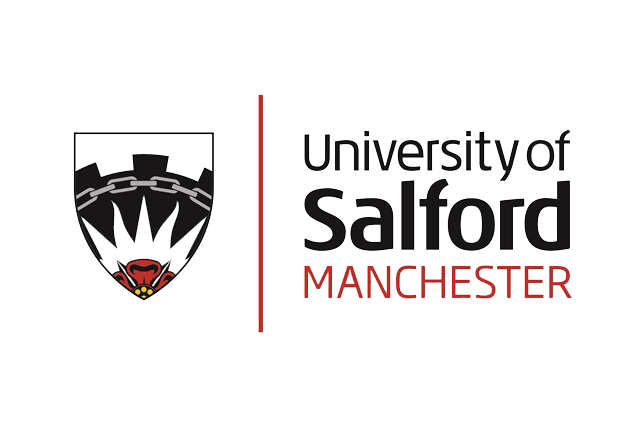University of Slaford, Manchester, UK

The University of Salford is a public research university in Salford, Greater Manchester, England, 1 mile (1.6 kilometres) west of Manchester city centre. The Royal Technical Institute, Salford, which opened in 1896, became a College of Advanced Technology in 1956 and gained university status in 1967, following the Robbins Report into higher education. It has 26,260 students and is in 160 acres (65 hectares) of parkland on the banks of the River Irwell.
Al-Balqa Applied University (BAU)

https://www.bau.edu.jo/index.aspx
Al-Balqa Applied University (BAU) is a distinguished state university founded by royal decree on August 22, 1996. Teaching at BAU began in the academic year 1997/1998. The university offers an extensive range of programs, including 184 Associate Diploma, 112 Bachelor’s, and 34 Postgraduate programs. Recently, between 2022 and 2024, BAU has established new programs: 22 Associate Diplomas, 4 Bachelor’s, 5 Technical Bachelor’s, and 5 Postgraduate programs.
BAU’s main campus in Salt City includes 12 faculties, while an additional 12 university colleges serve as satellite campuses across the kingdom. Furthermore, BAU oversees 51 private and public community colleges throughout Jordan.
BAU is dedicated to providing high-quality applied technical education through inspirational teaching and world-class research, ensuring that its graduates are well-equipped to compete in local, regional, and international markets.
Universiti Malaya (UM)

The Universiti Malaya is a public research university located in Kuala Lumpur, Malaysia. It is the oldest and highest-ranking Malaysian institution of higher education, and was the only university in newly independent Malaya. The predecessor of the university, King Edward VII College of Medicine, was established on 28 September 1905 in Singapore, then a territory of the British Empire. In October 1949, the merger of the King Edward VII College of Medicine and Raffles College created the university. Rapid growth during its first decade caused the university to organize as two autonomous divisions on 15 January 1959, one located in Singapore and the other in Kuala Lumpur. In 1960, the governments of Malaya and Singapore indicated that these two divisions should become autonomous and separate national universities. One branch was located in Singapore, becoming the University of Singapore (merging into the National University of Singapore in 1980) after the independence of Singapore from Malaysia, and the other branch was located in Kuala Lumpur, retaining the name Universiti Malaya. Legislation was passed in 1961 and the Universiti Malaya was established on 1 January 1962. In 2012, UM was granted autonomy by the Ministry of Higher Education. The university also collaborated with the University of Wales in 2013 to establish International University of Malaya-Wales (IUMW), a private university in Malaysia.Today, UM has more than 2,300 faculty members and is divided into fourteen faculties, two academies, three institutes and two academic centres. In the latest QS World University Rankings, UM is currently ranked 60th in the world, 11th in Asia, 3rd in Southeast Asia and the highest ranked learning institution in Malaysia.
Nanotechnology & Catalysis Research Centre (NANOCAT)

Nanotechnology and Catalysis Research Center (NANOCAT) is a PTJ incorporated by the Universiti Malaya (UM) in 2012, a Universiti Malaya Centre of Excellence (UMCOE). Its mission is to be a world leader in catalysis and nanotechnology coining sustainability and green technology. NANOCAT research thirst is deploying catalysis to support energy, chemical synthesis, environment pollution, and global warming mitigation as well as designing smart materials as a catalyst, sensor, nanocoating, and nanocomposites.
NANOCAT was given a status of Potential HiCOE in 2013 in catalysis. The center has strived to attain a national status for HiCOE (MOHE) as well as Nanocenter (NNC, MESTECC) with strong support and commitment from UM. In the last 6 years (2013 to 2019), it witnessed a pronounced explosion in its productivities in all aspects including numbers of postgraduate students, grants received consultancy, publication, pattern/copyright and etc.
Management and Science University (MSU)

Management and Science University (MSU) is a global multi-ranked institution focused on building holistic human capital. Envisioning a better, more sustainable future for all, MSU champions equality by providing a level playing field across extensive efforts in transforming lives, enriching future.
MSU currently holds a position in the QS Top 100 among the best young universities in the world, the QS Top 200 among the best universities in Asia, the QS Top 40 among the best universities in Southeast Asia and the QS Top 301+ for Graduate Employability Ranking. MSU is also ranked 580th in the QS World University Rankings (WUR) 2025 and placing at World 301-400 in the Times Higher Education (THE) University Impact Rankings 2024.
